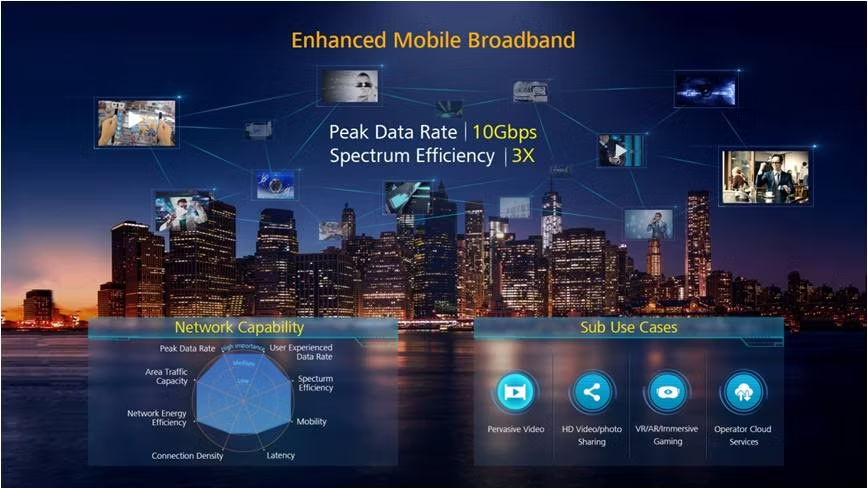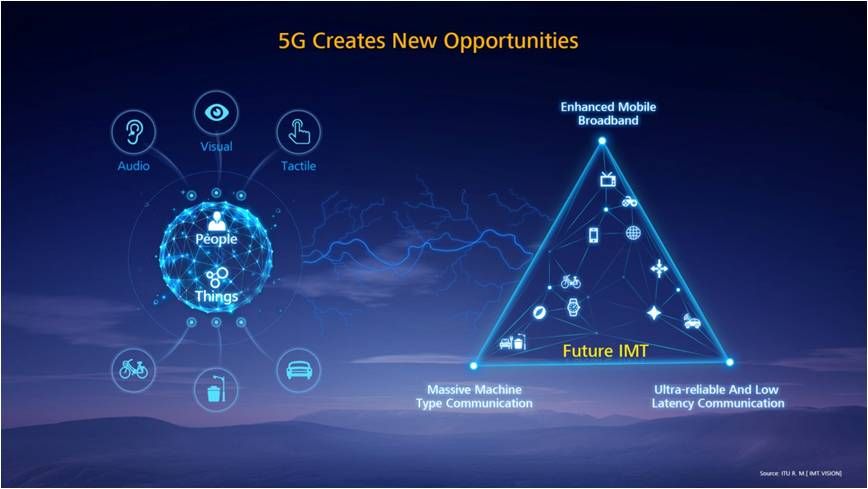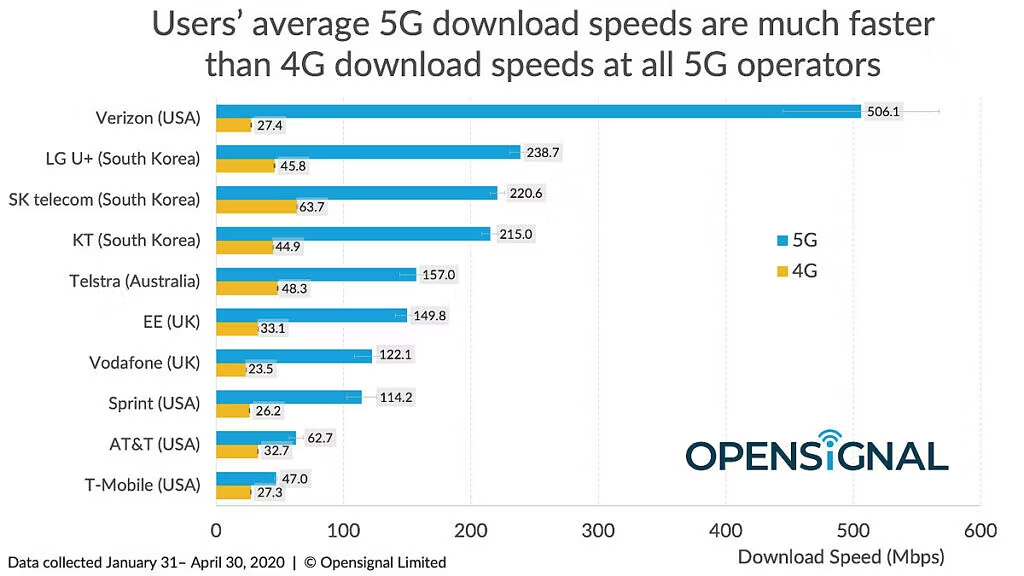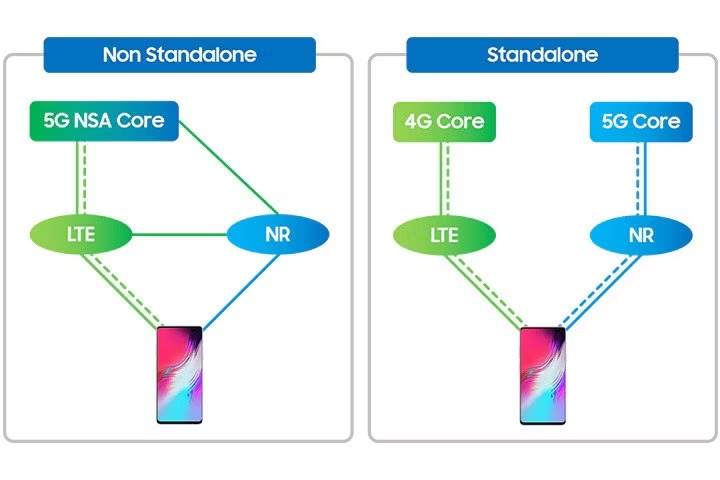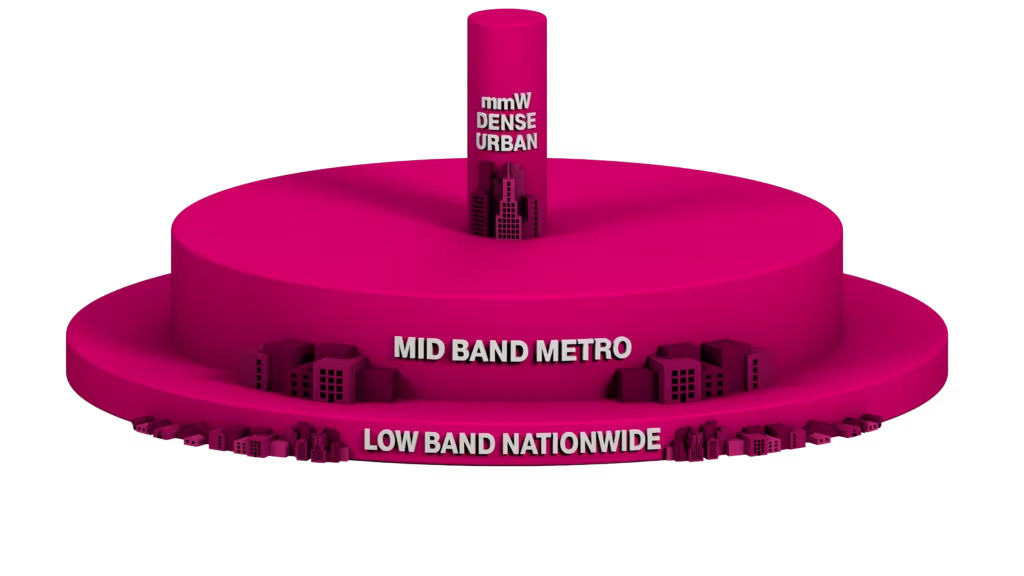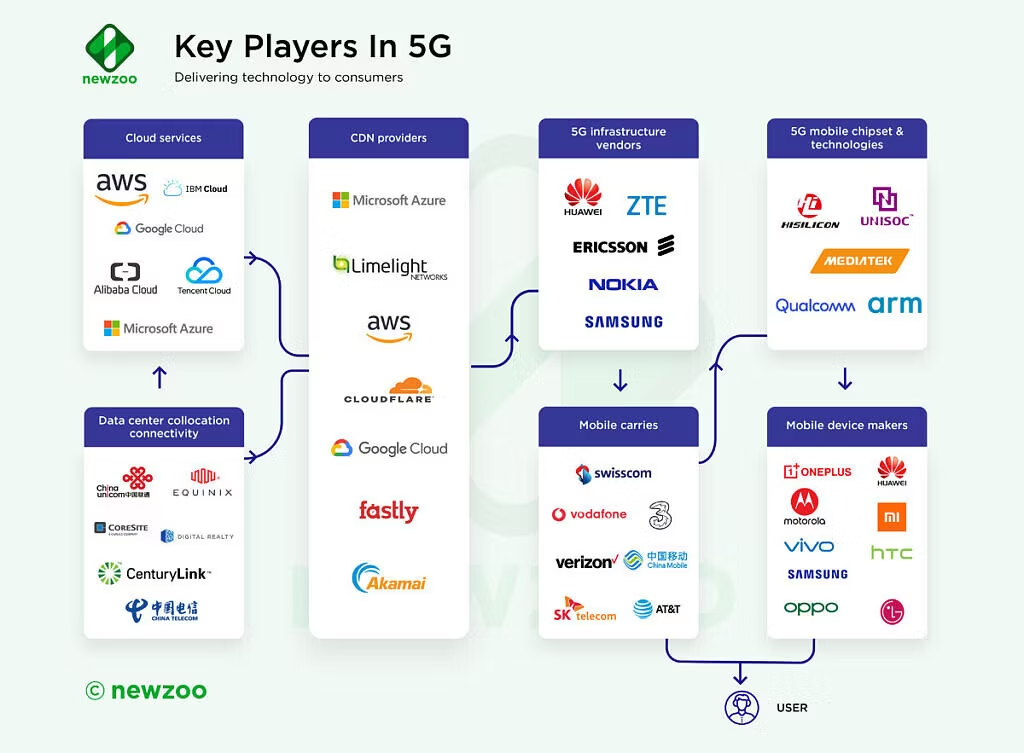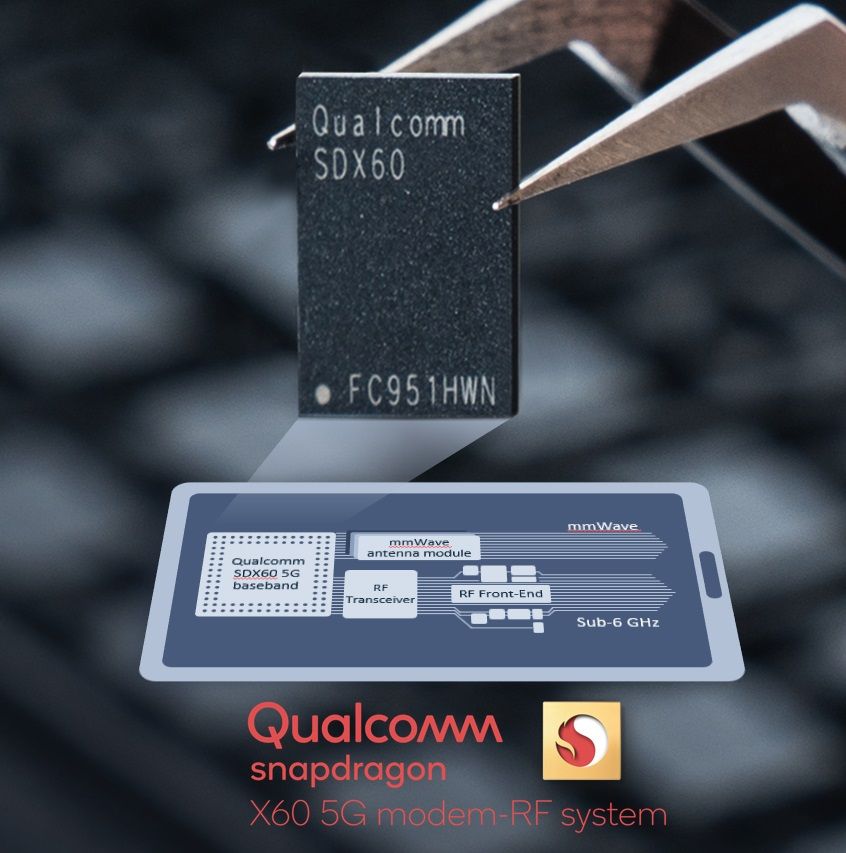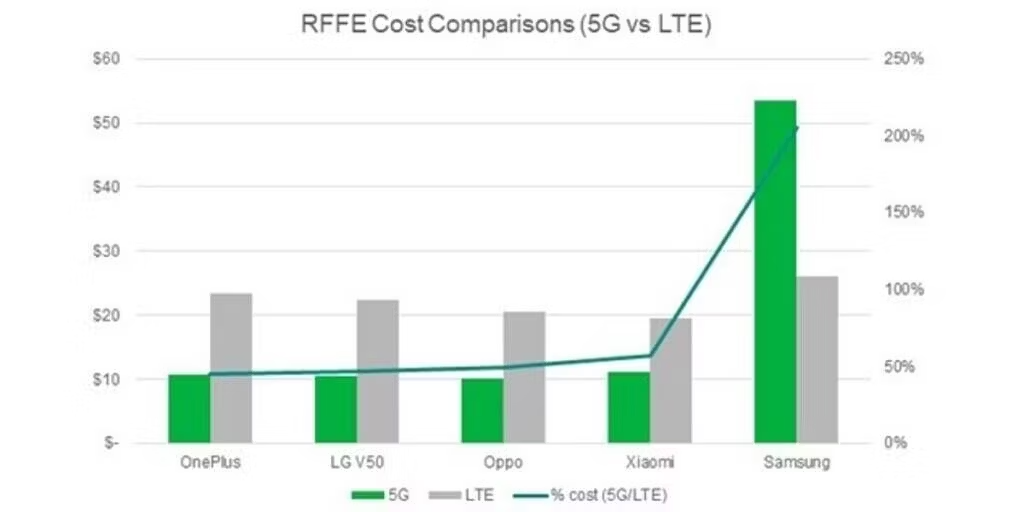It’s fair to say that in the last couple of years, there has been no buzzword having as strong a marketing impact as the word 5G. The word signifies so much that the industry has been promoting it in every nook and cranny, even still going into 2024. New carrier deployments wax lyrical about 5G services. Chip vendors talk about 5G modems and SoCs. Device makers even now are still upselling 5G as the “next big thing” that will “change users’ lives.” Depending on who you talk to, you’ll hear different things about 5G. Is it mildly upgraded 4G mobile broadband, or is it the technology that will connect industries and services, power a massive number of IoT devices, and serve as the backbone support for future innovation? What is 5G, exactly? Is it worth the hype?
5G is already a big part of the mobile era in the 2020s, and it’s tough to separate the wheat from the chaff. What do consumers need to be aware of? This is our in-depth guide to 5G where we’ll lay out the answers to these questions.
What is 5G?
5G is the fifth-generation mobile network. 5G NR (New Radio) is the air interface that powers 5G, succeeding 4G LTE. The 5G specification was developed by the 3GPP, an industry standards body. Release 15 of the specification was completed in 2018, Release 16 was completed in June 2020, Release 17 was completed in March 2021, Release 18 came in October 2022, and Release 19 is currently in development. Release 19 is especially interesting, as it paves the way for moving towards 6G.
Similar to 4G, 5G is a cellular mobile network that powers mobile broadband. It uses additional radio frequency (RF) waves that weren’t available to 4G, but the underlying principle is the same: networks are divided into cells, and devices get cellular connectivity by connecting to radio waves emitting from a carrier-installed node. The big benefits of 5G over 4G are increased capacity, higher bandwidth, and higher speeds.
The background
Every ten years or so, mobile networks get a technology upgrade in terms of the standard. The 1G networks of the 1980s were analog networks. The release of 2G GSM was a big milestone back in 1991, as 2G networks were digital networks. 2G networks, for example, brought support for SMS texting. There were three types of 2G networks: GSM, TDMA, and CDMA. The 2G GSM networks later brought rudimentary and slow mobile data in the form of GPRS and EDGE (2.5G and 2.75G respectively). Browsing the web with 2G meant waiting minutes for a web page to load, but this was only the beginning of mobile Internet.
The first commercial 3G networks were rolled out in 2001. While 2G signified digital voice calling, 3G signified mobile data. Just like 2G, 3G was of multiple types: W-CDMA (which was used in global phones and later evolved to be HSPA), UMTS, and CDMA2000 to name a few. It took a long time for 3G networks to proliferate across the world; India, for example, didn’t have 3G networks until 2010. While mobile internet was a viable venture with 3G, data speeds weren’t that good, as 3G UMTS only had a 144Kbps data speed target in the beginning. HSPA and HSPA+ (3.5G) did improve data speeds, but for the most part, browsing the web on 3G was a slow experience with speeds ranging from 1Mbps to 10Mbps on average.
Then came 4G LTE networks, starting in 2010. 4G was the standard that made fast, usable mobile data a reality. It had a data download speed target of 100Mbps, but a lot of 4G networks these days have lower download speeds because of congestion. It unlocked new industries such as ride-sharing. It brought IP-based telephony in the form of Voice over LTE (VoLTE). 4G LTE was the successor to both global 3G (WCDMA/UMTS/HSPA), and EVDO Rev A. 4G networks were the best yet, and smartphones featuring 4G were more powerful than ever. 4G has been iterated upon by LTE-Advanced, and advancements in 4G keep happening with new modem chips being released every year. 4G is a mature technology and one that has changed the world.
With ever-increasing data requirements, though, 4G couldn’t keep up. 4G networks were starting to become congested, and as more consumers used them, data speeds started falling.
The time for a new cellular generation had arrived.
5G networks and modems have been in development for four years now, but commercial 5G only started to become a reality in 2019. In 2020, more 5G networks were rolled out, and more 5G devices were released on the market. 5G has more or less become a mainstream network across the world, with that even changing rapidly in regions where it hasn’t quite come to that yet. The rollout of 4G networks is more or less complete, and so, carriers are turning their attention to 5G.
The applications of 5G: cellular data and voice, enterprise solutions, and IoT
5G is a broad term. Generally speaking, it has applications in three fields:
- Mobile data and voice
- Enterprise solutions
- IoT connectivity
5G for smartphone users deals with the first field. The enterprise sector will, no doubt, benefit from it as well, with applications in industries such as driverless cars, smart cities, uses in the medical sector, smart machinery, smart manufacturing, etc. With respect to the third field, IoT, the telecommunications and mobile industries have been proclaiming for years that 5G will connect Internet of Things (IoT) devices in massive numbers. Everything around us will be connected. Will it happen? Possibly. For smartphone users, the latter two fields are academically interesting, but it’s the first field—mobile data and voice—which actually matters for end users.
For smartphone users, 5G refers to faster data—much, much faster in some cases. These networks also promise incredibly low latency, on par with wired broadband. This is a big deal for use cases such as multiplayer cloud gaming which rely on extremely low latency, or any other kind of online gaming. While 4G networks have never managed to get latency down to wired broadband levels, 5G is promising just that.
5G also has much higher bandwidth and network data capacity. Testing shows that it doesn’t seem to be as overwhelmed as 4G was when a huge number of users begin using the network. For carriers that have overwhelmed 4G networks, 5G represents an improved quality of service, less downtime, and a better customer experience.
It’s all about the speeds, though. The 5G specification targets 20Gbps maximum downlink speeds, which is ten times more than the highest 4G LTE modem chip (which goes as high as 2Gbps). Of course, 20Gbps is only a theoretical target so far. The best modem chips released by chip vendors Qualcomm like the Snapdragon X75 Modem can go as high as a theoretical maximum of 7.5Gbps when using millimeter wave 5G.
With these speeds, consumers will naturally expect 5G to be an order of magnitude faster than their existing 4G LTE networks. It’s more complicated than that, though. Networks such as T-Mobile and AT&T’s low-band 5G networks are only slightly faster than 4G networks. In some cases, they may even be slower. A 5G network doesn’t necessarily mean it will be substantially faster than a 4G network, because it’s all about the radio frequency spectrum. The rabbit hole here is quite deep, so you can have 5G networks with data downlink speeds of only 30-50Mbps, while other mid-band 5G networks can go as high as 500-600Mbps. Networks vary. Network types vary as well.
The technology behind 5G: OFDM, spectrum, and modes
Speaking broadly, 5G is powered by the same technology that powers 4G: orthogonal frequency division multiplexing (OFDM). OFDM is a type of digital transmission and a method of encoding digital data on multiple carrier frequencies. It’s robust and efficient, so it’s the technology of choice. 5G incorporates both frequency division duplex (FDD) and time division duplex (TDD) technologies, just like 4G (FDD-LTE and TDD-LTE).
The key characteristic that separates 5G from 4G is the spectrum. Spectrum is the range of electromagnetic frequencies that are used to transmit data through the air. 5G can use a broader spectrum of RF waves than 4G, which gives it the ability to provide higher speeds and higher data capacity. 10-20MHz of 5G spectrum in a low band such as 600MHz will give speeds ranging from 50Mbps-100Mbps, but as you move up the frequency spectrum, the speeds go rapidly up as well.
4G spectrum can also be re-purposed thanks to a technology called Dynamic Spectrum Sharing (DSS). This is what carriers such as AT&T is doing in the U.S. The highest 5G speeds will only be achieved with higher frequencies, though.
There are two modes of 5G: non-standalone mode (NSA) and standalone mode (SA). Right now, nearly every carrier is relying on NSA 5G. Here, the 5G network is dependent on 4G base stations and a 4G core network. The data link transfer in such networks is using 4G network facilities. NSA is easier for carriers to deploy as they can reuse their 4G core networks and network facilities. The disadvantage here is that it’s dependent on older technology used for 4G, so speeds won’t be as high, while latency won’t go as low as it can go in SA mode. However, there are still benefits to the 5G protocol itself that consumers will hopefully realize.
Source: Samsung
The SA mode is the true 5G dream that carriers are really starting to push. Both T-Mobile in the U.S. and Verizon offer commercial standalone 5G networks, but AT&T was far behind the competition with its only arriving in April 2023. SA 5G networks are completely independent of 4G, as they use a 5G core network and independent network facilities. The data link transfer here doesn’t rely on 4G technology, which means SA networks can promise much higher speeds and much lower latency.
Newer smartphone releases powered by the latest modems support both modes, meaning they support future SA networks in addition to the current NSA networks.
Network bands explained
Sub-6GHz – Low band and mid-band
There are two types of 5G. One is sub-6GHz 5G, which can be thought of as the true successor to 4G LTE. The other is millimeter wave 5G (mmWave). When you read about 1Gbps downlink speeds and line-of-sight to node requirements, you’re reading about mmWave. When you read about reliable 5G networks that actually work indoors and with real-world speeds of 100-500Mbps, you’re reading about sub-6GHz.
Most consumers will only experience sub-6GHz because globally, carriers have been intelligent enough to treat mmWave with caution. In some countries such as the U.S., though, carriers have (cynically, in my opinion) launched mmWave first because of the initial lack of available sub-6GHz spectrum. While countries such as Russia, Japan, and South Korea have joined the mmWave bandwagon, the vast majority of the world has chosen to play it safe with sub-6GHz.
What do these terms mean, though?
Sub-6GHz 5G (also referred to as sub-6) means the radio frequencies of the network bands are lower than 6GHz. (As an aside, all 4G bands are sub-6GHz.) mmWave, on the other hand, means the radio frequencies of the bands are higher than 6GHz. mmWave bands range from 24GHz all the way to 100GHz, but in practice, carriers have rolled out networks ranging from 26GHz-39GHz so far.
Sub-6GHz is of two types: low-band and mid-band.
Low band 5G is similar to the FDD-LTE bands that are used in 4G networks today. These bands have the lowest radio frequencies of the 5G “layer cake” dubbed by T-Mobile. T-Mobile has a 600MHz “nationwide” 5G network in the U.S., for example, while AT&T has a similar 700MHz network. Low radio frequency bands like these are the best at penetrating obstacles like buildings, trees, and reaching as far as geographically possible from a given carrier-installed node. This makes these bands the optimal choice for providing great indoor coverage. Conversely, however, their low frequencies mean they have the lowest capacity to carry data, which, in turn, means speeds aren’t as high as you may expect from 5G.
Common questions on Google Search are already asking: “Why is 5G so slow?” To some extent, that’s a U.S.-specific issue. The U.S. has gone all-in with low band and mmWave, missing the crucial mid-band part of the equation. Both T-Mobile and AT&T’s nationwide 5G networks are available to hundreds of millions of people, but their data speeds aren’t impressive at all. At most, they may only reach a few hundred megabits per second in download speed, but in the real world, it’s far more likely for them to reach 50-100Mbps, with speeds going as low as 20-30Mbps, which is indistinguishable from average 4G.
5G networks in other parts of the world, such as South Korea, Japan, and the U.K., don’t suffer from this issue as they have emphasized the need for mid-band. Low-band networks will continue to be a part of the layer cake, but for now, the U.S. is placing too much emphasis on them. The problem is compounded by the fact that carriers lack the critical spectrum necessary to enable these low-band networks to achieve their full potential in terms of data speeds.
Mid-band is the optimal choice for building a 5G network. Mid-band frequencies such as the popular 3.5GHz band as well as the 2.5GHz band aren’t the best at penetrating obstacles unlike low band frequencies nor can they carry as much data as mmWave frequencies. They aren’t the best for either indoor coverage or for the highest data speeds, but they are the best all-rounder. Mid-band coverage is acceptable as long as carriers are willing to install the appropriate number of nodes at any given location. Also, data speeds aren’t an issue as long as there is enough available spectrum for carriers to use. After all, 4G bands such as TDD-LTE band 40 (2300MHz) are also mid-band, and carriers like Jio and China Mobile have used them with success in India and China respectively.
The spectrum issue is where the U.S. carriers ran into a roadblock. Up until now, none of the three major carriers in the U.S. have rolled out a mid-band network for hundreds of millions of people. After merging with Sprint, T-Mobile has started building a mid-band network, but it’s available only in a few cities so far. Verizon and AT&T have yet to roll out mid-band 5G networks because they don’t even have the available spectrum. The U.S. FCC freed up valuable spectrum in the C Band earlier this year, much later than other countries. Both Verizon and AT&T have since rolled out their mid-band networks at the start of 2022, a lot later than the rest of the world and later than both carriers had initially promised.
Consumers of mid-band 5G networks in countries like South Korea have reported great speeds, and that’s the model the rest of the world should follow.
The controversial nature of mmWave
mmWave 5G is an entirely different matter. It turns out all the objections that many informed people in the telecommunications industry had to mmWave were correct. Yes, it does bring incredibly high speeds—speeds can regularly break the 1Gbps barrier for downlink. Yes, it does have low latency. However, none of that matters to any appreciable extent when you consider the limitations of the technology.
mmWave requires a line-of-sight to the carrier-installed node. The mmWave bands use incredibly high radio frequencies, starting at 24GHz and going all the way up to 40GHz. These frequencies are blocked by obstacles like buildings, trees, and even a user’s hand. Even rain will degrade the signal, and the geographical reach of these frequencies is only about 500 meters. It means that unless carriers install nodes in every lane, street, and neighborhood, a mmWave signal will never be available to most consumers. You can use beamforming and place multiple antenna modules in a phone, but you can’t overcome physics at the end of the day. mmWave Extended Range for Fixed Wireless Access (FWA) is currently in development which will extend its coverage to around 7km, though it’s likely a long way away from reaching consumers yet and won’t really work with smartphones.
Yes, these limitations are because of physics. There is a reason why so much spectrum was unused in these high frequencies. Using them for a mobile network that actually depends on radio waves reaching as far as they can is a bad idea. It’s a bad idea in principle, and carriers are only now starting to realize that. In the U.S., for example, T-Mobile has stopped promoting its mmWave 5G network that is available in select locations in select cities in the country. AT&T’s mmWave network isn’t even available to general consumers as it’s restricted to businesses. It’s only Verizon that still advertises its mmWave “5G Ultra Wide Band” network, but once the novelty factor of 1Gbps speeds wears off, there is precious little utility to these newfangled networks.
The argument can be made that mmWave 5G works best when intended for crowded settings like landmarks, stadiums, meeting halls, etc. I would still disagree, as mid-band 5G is just a far better compromise. Which sounds better: 1Gbps 5G with a signal that disappears as soon as you walk away from the public landmark, or 600Mbps 5G with a signal that actually keeps up when you head indoors? I know which one I would choose. Besides, it’s a far easier choice for carriers as well: spend less money on installing mmWave nodes, and have a network that can be used by more people over a wider geographical area.
Thankfully, as I mentioned, the vast majority of carriers have stayed far away from mmWave. 5G roll-outs in places like Saudi Arabia, Europe, and China are all based on mid-band, and in some cases, complemented with low-band.
The 5G ecosystem
The technology itself is nothing without its ecosystem. The 5G ecosystem consists of carriers that roll out 5G networks, network chip manufacturers, chip vendors that sell modem chips to enable smartphones to connect to these networks, and device makers that sell phones to end consumers. Other stakeholders in the industry include governments and their antitrust bodies, contractors, and more.
Carriers
In June 2020, 35 countries had rolled out some form of a 5G network up until now. There are 195 countries in the world, so there is still quite a way to go before 5G networks are available in even half of the world’s countries. At this point, Qualcomm will point out that 5G adoption has been faster than 4G LTE so far. In 2022, according to a GSA report, 85 countries rolled out 5G networks in compliance with the 3GPP. Though deployment has slowed, this number has increased an unknown amount since then.
Chip vendors
Now, there are two kinds of chip vendors. Vendors like Huawei, Nokia, Ericsson, Samsung, and ZTE sell 5G network chips to carriers to build base stations and carrier nodes. Thanks to political and security allegations, Huawei has been blocked from selling or having any part in the 5G networks of a lot of western countries, such as the U.S. This leaves Ericsson and Nokia to carry the mantle. On the other hand, it is generally accepted that Huawei has a technological advantage in network chips, and China’s 5G networks have been built by Huawei. With the trade ban on HiSilicon, though, it seems pretty clear that Huawei’s dominance in this area is waning.
The other type of chip vendors are those that sell modem chips to smartphone device makers. Qualcomm is the prime example here, but Samsung Systems LSI and MediaTek also play a part. Huawei’s HiSilicon Group’s modem chips were used by Huawei itself, but with the coming dissolution of HiSilicon, this seems to be coming to an end.
Qualcomm’s first-generation X50 5G modem-RF system was announced back in October 2016, and it powered the first wave of 5G phones in early 2019. The 7nm second-generation X55 modem-RF system powered a few late 2019 Snapdragon 855-powered phones, but it came into widespread use in 2020. It’s paired with the flagship Snapdragon 865 SoC, which doesn’t have an integrated modem of its own. The 5nm third-generation X60 modem was announced by Qualcomm in February 2020, and it showed up in the next generation of Qualcomm chipsets. It brought innovations such as carrier aggregation of different 5G modes, higher downlink speeds, and more. The most recent Qualcomm 5G modem is the Snapdragon X75, and it comes with the Snapdragon 8 Gen 3.
Qualcomm also brought 5G to the upper mid-range price tier for the first time with the launch of the Qualcomm Snapdragon 765 in December 2019, which had its own integrated Snapdragon X52 5G modem. It had lower specifications but supported both sub-6GHz as well as mmWave. In June 2020, the company then brought 5G to the lower mid-range price tier with the announcement of the Snapdragon 690, which supports sub-6GHz 5G (and not mmWave).
Samsung Systems LSI’s first 5G modem was the Exynos 5100, which powered the first 5G Exynos phones last year. It was succeeded by the Exynos 5G Modem 5123, which is used in the 5G Exynos 990-powered variants of the Galaxy S20 and Galaxy Note 20 series. The mid-range Exynos 980 SoC is also 5G capable. Apart from Qualcomm, Samsung is the only chip vendor that produces and sells mmWave 5G modems. The 5G Exynos variants of the Galaxy S20 and the Galaxy Note 20 onwards have mmWave support.
MediaTek, on the other hand, entered the 5G era with the launch of its new 5G Dimensity series of SoCs. The first SoC to be announced in this series was the Dimensity 1000 in November 2019. It has followed that launch by launching the mid-range Dimensity 800, the upgraded Dimensity 1000+ and Dimensity 820, as well as the lower mid-tier Dimensity 720 in 2020. MediaTek’s 5G modems choose to forgo mmWave support, opting to stick with sub-6GHz.
The current state of the 5G ecosystem and future outlook
Years ago, the 5G ecosystem was immature and unfinished. It was relegated to phones costing above $1,000. In 2020, the ecosystem has matured a lot in terms of device availability, the quality of 5G networks, the quality of 5G modems, and the scale of the networks themselves. Some of the first-generation 5G phones were so immature that bizarre situations developed. The Sprint variants of the OnePlus 7 Pro 5G, the Galaxy S10, and the LG V50 ThinQ can no longer connect to any 5G network because of T-Mobile’s merger with Sprint. The first-generation mmWave 5G phones that launched on T-Mobile can’t connect to the carrier’s nationwide low-band network. Carriers use different network bands, so device makers have to incorporate the most number of bands they can to have unlocked phones compatible with all networks.
Conclusion
5G is a complex subject. In this article, we have only scratched the surface of the different sub-topics of 5G. Other sub-topics not covered here include the potential of 5G as a home broadband replacement, the power efficiency of 5G modems, the impact of 5G on flagship smartphone pricing, the cost structure of 5G services, and much more.
A lot has been written about 5G, and a lot more will continue to be written about it until it is inevitably succeeded by the next wireless generation. There will be a lot of debates about the need and efficacy of 5G. There will be a lot of marketing jargon. There will be a lot of upselling. The industry has converged around 5G because there is a lot of money to be made here. Like it or not, it seems 5G is here to stay.
References
- What is 5G? – Qualcomm
- Ericsson – 5G device availability report – June 2020
- GSMA – The 5G Guide



